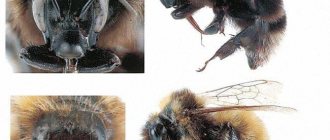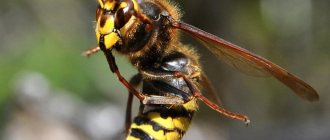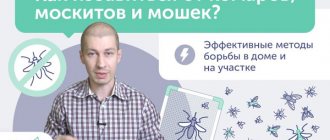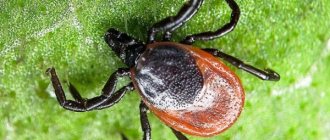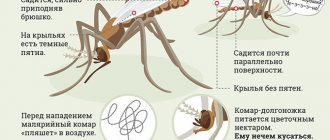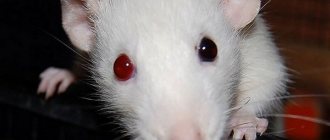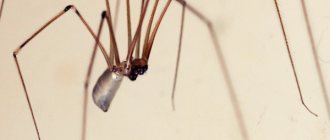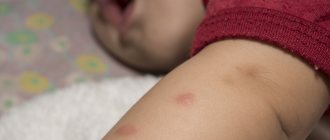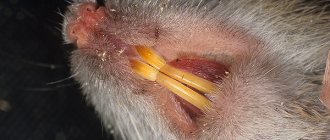Bumblebees are much more peaceful than many insects, even their closest relatives - bees.
But this does not mean that an encounter with a large, hairy insect is guaranteed to be without trouble. If you behave incorrectly, it is quite possible to provoke an attack and a bumblebee bite. You need to know how to act in this situation to avoid negative consequences.
Features of a bumblebee sting
Not every bumblebee can sting. The queen and working females have a sting, but nature has not endowed male bumblebees with this weapon. Despite the close family ties between bumblebees and bees, their sting is more like that of a wasp. It is absolutely smooth, without serrations that interfere with its release from the victim’s skin after a bite. This is why an insect can sting repeatedly without causing any harm to itself.
The inside of a bumblebee's sting is hollow. At the moment of the bite, poison passes through the canal and enters the victim’s blood.
Can bumblebees sting humans?
Initially, leisurely insects are not aggressive. The bumblebee is conditionally dangerous for humans, that is, its attack occurs under a certain set of circumstances:
- a threat to the safety of the colony or a danger to a specific insect;
- mechanical destruction of the nest;
- the smell of oxidizing metal, perfume, alcohol from a person (and old fumes are perceived even more aggressively);
- the predominance of deep blue shades in clothing or the environment;
- sudden movements in close proximity to the insect.
The sting of any bumblebee is different from the sting of bees. The latter have a jagged sting, so after a successful attack it remains in the victim’s body. The bumblebee’s “biting device” is smooth and freely removable. Therefore, the same bumblebee can sting people and animals multiple times.
Stinging attacks are carried out exclusively by female bumblebees. Only their mouthparts are equipped with a sting, inside of which there is poison from bombolithine, serines, phospholipase A2, a mixture of proteins and aliphatic compounds.
Males are also capable of defending themselves, but they use their mandibles. Although the bite is noticeable, due to the lack of poison it is harmless to people and animals.
The danger of a bumblebee bite
Having decided on the question of whether bumblebees bite, understanding that you need to be wary of females, you still shouldn’t be afraid of meeting them. However, it is better to behave carefully so as not to cause insect aggression.
Bumblebee sting
A bumblebee sting is quite painful, but does not pose a particular threat to the vast majority of people. It is dangerous only for allergy sufferers and people whose immune systems are not functioning properly.
In addition to an allergic reaction, the bite can cause itching. When scratching, dirt can get into the wound, which can cause infection.
The benefits and harms of a bumblebee sting
Apitherapy has been used in folk medicine since time immemorial, and in the 20th century, science confirmed the benefits of the technique. The object of scientific research was the venom of the domestic bee, but the biological similarity of stinging insects does not deny the healing power of bumblebee venom. The secret is useful for musculoskeletal pathologies:
- arthritis and arthrosis;
- radiculitis;
- tendovaginitis;
- joint contractures;
- sprains and inflammation of soft tissues.
Rubbing with ointments containing poison is effective for colds, bronchitis, and hypothermia. The unique composition of the poison stimulates the body's metabolic processes and increases defenses.
Like any toxic substance, the venom of stinging insects is used with caution. Well, in case of accidental bites (especially massive ones), there is no need to talk about treatment with bumblebee venom.
For a healthy person, a single bumblebee bite is not dangerous; the harm is noticeable with multiple attacks. If the victim is prone to allergic reactions or suffers from chronic diseases of the cardiovascular system and respiratory system, the likelihood of complications is high.
Possible reactions:
- slight malaise, headache, dizziness;
- low-grade fever;
- rashes like urticaria;
- gastrointestinal disorders.
Fact! When a bumblebee stings, it injects the victim with a fair amount of poison. The body responds to this by producing endogenous antidotes that have little toxicity. The more of these substances are produced, the more pronounced the consequences of the bite.
Do the bites of different types of bumblebees differ?
The composition of bumblebee venom may vary slightly depending on the species of the insect. The same factor largely influences the likelihood of an attack, as well as the painfulness of the bite. The most common types of bumblebees:
- garden - a small insect (up to 22 mm), non-aggressive, rarely bites, the bite is not very painful;
- black carpenter bumblebee - an insect with a black body and violet-blue wings, bites to protect the nest or in defense, the bite is quite painful;
- ground bumblebee - lives underground, preferring burrows left by rodents, bites very rarely;
- stone bumblebee - rather large insects (up to 3 cm) build nests in piles of stones; the poison can cause severe allergies.
City and field bumblebees also bite infrequently, the pain of the bite is moderate.
Use of medications
In addition to providing emergency care immediately after a bite, it is recommended to use medications that are used in accordance with the groups of consequences.
Allergy remedies
Hornet sting - what to do at home
If an allergic reaction occurs, you should seek help from the following antihistamines; the result will be visible within 30 minutes:
- demidrol - it is advisable to take 1-2 tablets 3 times a day for 10 days;
- Suprostin - since the drug contains a side effect in the form of drowsiness, it is recommended to take 1-2 tablets before bedtime;
- Diazolin - take 1 tablet until the adverse symptoms disappear.
Treatment of external consequences
In case of a tumor or swelling of individual parts, experts advise to smear:
- hydrocortisone – taken externally up to 3 times every 8 hours;
- as a rescuer - apply a thin layer to the injured area and let it dry, repeat the action up to 2-3 times a day;
- psilobalm - treat the working surface with 3 g of the substance, repeating the procedure up to 4 times within 24 hours.
Healthy. If there are no complications after an insect bite, then the swelling and swelling will go away in 48-96 hours.
Traditional methods
You can use for treatment not only drugs containing chemical elements, but also mixtures of natural components, recipes for which will be given below:
- Grind the plantain leaves and put them on a bandage. Apply the finished compress to the wound and change the bandage every 3 hours.
- Take half a teaspoon of tansy, pour a glass of water over the herb and cook for 300 seconds over low heat. Allow the solution to cool, then moisten a cotton swab in it and apply the resulting compress to the wound. Change the bandage when it is dry.
- Wash and cut fresh potatoes into rounds and apply each of them, the last one is placed when the previous one has dried, to the site of injection of the poison.
- Rinse the bite area under running water, then put banana pulp on it to reduce itching.
Healthy. To remove most of the poison from the body, simply apply a wet lump of sugar to the wound.
Symptoms and appearance of the bite
After a person is stung by a bumblebee, the following symptoms are most often observed:
- sharp, rather severe pain, burning;
- compaction at the site of the bite;
- swelling.
The bumblebee bite itself looks like a red dot, around which the skin swells and turns red. The intensity and area of swelling and redness depend on the individual characteristics of the bitten person, as well as the period after which all traces will disappear. For some, everything goes away in a matter of hours, for others, healing is delayed for weeks.
What to do if bitten by a bumblebee?
After a bumblebee bite, you need to calm down - panic will not help in this situation. Then you can begin providing first aid, which should begin by inspecting the affected area for the presence of a sting. Bumblebees do not leave a stinger in the human body, but there are times when it breaks off. In this case, it must be removed with disinfected tweezers, but under no circumstances squeeze it out.
First aid
All first aid actions are aimed at alleviating the physical condition of the victim, as well as preventing the occurrence of an allergic reaction.
After removing the sting from the wound, you can proceed to the following steps:
- To disinfect the bite site, for this, in addition to medical alcohol, you can also use vinegar, a weak solution of manganese, or ammonia diluted with water.
- Then you need to apply a cold compress, using, for example, a heating pad with cold water or ice wrapped in a cloth - this will reduce pain and swelling.
- The use of antihistamines is also recommended. For example, “Claritin”, “Zirtek”, “Suprastin”, “Tavegil”. These medications will help slightly reduce a possible violent allergic reaction.
After receiving first aid, you should contact your family doctor, who will give recommendations on further actions.
Further treatment
To more painlessly endure an insect bite, you should adhere to the following recommendations:
- drink plenty of fluids to reduce toxic reactions;
- rest - a bite can cause dizziness and headache;
- local anesthesia.
You can apply an ointment or gel to the bite site, for example “Rescuer”, “Diprospan”. If the reaction is too violent, antihistamines may not cope, in which case it is necessary to use Dexamethasone or Diphenhydramine. If there is a threat of developing a serious allergic reaction or anaphylactic shock, you must use adrenaline and be sure to seek help from a clinic.
Localization of bites and greatest danger
The greatest danger from a bumblebee bite is if it strikes the neck or face. Swelling that develops after a bite to the neck can cause breathing problems. If an insect stings near the eye, in the lip, tongue or nasal mucosa, severe swelling makes it difficult for the affected organs to function normally. It is least dangerous if a bumblebee stings your finger, leg or arm.
shemale face
Prevention
An attack can be avoided if you do not touch, do not approach the insect and its home, and avoid them in every possible way. If a bumblebee lands on a person, you should not drive it away or touch it with your hands. It is not recommended to walk barefoot in places where ground bumblebees could make a home for themselves. Sharp, impetuous movements and a loud cry will cause the bumblebee to defend itself and sting. He is attracted to bright colored clothes, perfume compositions, and the smell of alcohol. In summer it is not advisable to eat outside. The insect loves sweets and can fly to the smell of fruits, ice cream, and carbonated drinks. Mosquito nets on windows and mesh curtains in doorways will protect against penetration into the house. When planning an outdoor holiday, it is recommended to take a first aid kit, making sure that you have antihistamines.
The reaction to a bumblebee bite can be varied and expressed with varying intensity. For many adults, a single sting does not pose a serious danger, but first aid must be provided to the victim. People at risk should pay special attention to signs of complications and, if possible, consult a doctor.
Relieving swelling
Bumblebee venom, once in the blood, spreads throughout the body. The immune system responds to a foreign substance by producing antibodies. They react with the toxin, resulting in the formation of new chemical compounds. They penetrate into the tissues, disrupt microcirculation, as a result of which fluid accumulates in the tissues - swelling is formed.
The best way to reduce swelling is to cool the affected area. You can also use folk or medicinal decongestants.
When do hornets sleep?
Hornets are insects of the same age. Only fertile females survive the winter: they hibernate, and the rest of the hornets die. Females wake up in mid-May, when the temperature becomes at least 10 degrees.
Interesting materials:
What does horse meat taste like? What is the penalty for driving without insurance? What is the punishment for violating labor discipline? Which direction is taken to be the direction of the electric field strength vector? What is the population of the planet in 2022? Which olive oil is better, Greek Spanish or Italian? Which olive oil is better, Spanish or Italian? What are the grounds for termination of an employment contract at the initiative of the employer? What is Milana Nekrasova's middle name? What kind of power does USB provide?
Treatment
Most people do not need special treatment after a bumblebee bite; all symptoms go away on their own in a fairly short time. And yet, to reduce pain, relieve redness and swelling, you can use medications and folk remedies.
Folk remedies
Our distant ancestors knew what to do after a bumblebee bite. Much of their advice is still relevant today. The following will help reduce discomfort:
- chopped plantain, parsley;
- aloe juice or freshly cut leaf;
- compress of grated onions;
- a slurry of soda mixed with water;
- lemon juice;
- a slice of fresh cucumber, lemon, sour apple, potato;
- chamomile decoction;
- a mixture of honey and chopped garlic.
Alcohol tincture of calendula or olive oil will help relieve swelling and redness.
Pills
To help a person bitten by a bumblebee, tablets, as strange as it may sound, are most often used externally. It is necessary to dissolve a tablet of activated carbon, aspirin or validol in water, and then moisten a cotton pad in the solution and apply it to the wound. This will soothe the pain and relieve swelling.
Antihistamines are taken internally: Suprastin, Tavegil, Citrine and others.
Ointments
Ointments and gels reduce burning, relieve redness and swelling. The most effective:
- Fenistil gel;
- Menovazin;
- balm “Star”;
- Rescuer;
- Psilo-balm;
- Levomekol.
Levomekol
Attention! It is strictly not recommended to use hormonal ointments without a doctor’s prescription.
Helping a child after a bite
The injured child must be shown to a doctor, and before that a number of pre-medical measures must be taken:
- inspect the wound and rinse with boiled water and antiseptic;
- if there are no signs of complications, treat the bite with medical alcohol, a weak solution of potassium permanganate, or chlorhexidine;
- Apply a cold compress to the injury;
- even in the absence of allergies, give an antihistamine - Suprastin, Zodak, Tavegil in the dosage according to the attached instructions.
After treating the affected area, put the child to bed and give a warm drink every hour and a half.
How dangerous is an allergic reaction?
The bumblebee is dangerous because at the time of the bite it injects a toxic substance into the wound, which causes intoxication of the body. But the main health threat is a possible allergic reaction to the toxin. The degree of intensity may vary depending on the individual characteristics of the person. Allergy symptoms:
- extensive swelling extending far beyond the affected area;
- the appearance of a rash on the body;
- nausea, vomiting;
- diarrhea;
- difficulty breathing, suffocation;
- heart rhythm disturbance;
- fever, chills.
In severe cases, convulsions, loss of consciousness, and anaphylactic shock are observed.
An allergic reaction to bumblebee venom that enters the body may not appear immediately, but usually it occurs quite quickly within a maximum of 1.5 hours after the bite.
Does it attack a person?
Seeing a large bee-like insect, many people get scared, not knowing whether bumblebees bite people. On their own initiative, they do not attack a person unless there are aggressive actions on his part.
Having seen a bumblebee nest near their home, many try to get rid of the insect, not only by fumigating them with smoke, but also by destroying the “houses”.
Note! You should not try to catch bumblebees with your hands. Even the male is able to stand up for himself, biting through the palm with his sharp jaws.
Can a bumblebee bite a person on its own initiative?
This is possible in 2 cases:
- if the clothes are blue, for some reason this shade is dangerous for insects; therefore, one can expect an inadequate reaction; although the sting practically does not pierce the fabric itself, the insect can injure an open area of the body;
- Bumblebees are aggressive towards the smells of alcohol, fumes, perfumes and tobacco; this can become a reason for an attack by a whole swarm of insects that find themselves in close proximity.
Sometimes bee relatives are irritated by the smell of oxidized metal. This “aroma” of the body arises from constantly wearing watches with bracelets and jewelry. The metal oxidizes under the influence of sweat secreted by the skin, which is quite typical for the hot season.
Bumblebees are also attracted by the smell of fried meat, watermelons, melons, and sweet drinks. Therefore, it is not recommended to have picnics near insect homes, so as not to brush off the annoying invasion later. This unnerves the bumblebees and can become a reason for an attack.
Bumblebees are also attracted by the smell of fried meat, watermelons, melons, and sweet drinks.
If a person does suffer, it is advisable to take immediate action, even if there is no tendency to allergies:
- apply fresh parsley or plantain leaf to the injured area, changing the compress every 2 hours until the swelling subsides;
- Dressings with pieces of apple, raw potatoes, onions mixed with honey help well;
- you can periodically treat the wound with lemon juice;
- Traditional healers recommend making compresses with soda solution, activated carbon slurry or validol.
If the bite is in a sensitive area (for example, in the eye area), it is better to use cold compresses or ice cubes. This will help relieve pain, relieve swelling and slow down the absorption of poison.
Additional Information. A compress using refined sugar moistened with water can remove bumblebee toxin from a wound.
You should not drink alcohol after a bite - alcohol will only intensify the allergic reaction. But hot sweet tea and plenty of liquid will be welcome.
In some cases, it is more rational to seek medical help:
- if several bumblebees are stung at once;
- when the bite was in the throat area, oral mucosa or eyeball;
- if an elderly person or child is injured;
- in the presence of severe pain, swelling, suppuration and chills.
Bumblebee bites
Pay attention! If the victim is allergic, after contact with a bumblebee you should not wait for the body’s reaction, but immediately consult a doctor.
It is most dangerous if there was not just one bite, but several individuals. In this case, the amount of poison entering the body from the sting increases many times, and the internal systems have difficulty coping with intoxication.
Such situations are rare, because bumblebees usually do not attack in a flock. More often this happens if there have been attempts to destroy the insect nest. Even when it was accidentally touched, bumblebees will not figure it out; their self-preservation instinct turns on.
You should not hunt for wild honey produced by bumblebees - its taste is in many ways inferior to that of bees. But attempts at such penetrations can have disastrous consequences.
When is a doctor needed?
In some situations, a person’s life after a bumblebee bite is in serious danger and only qualified medical assistance can help. Consultation with a doctor is required in the following cases:
- the insect stung a small child, a pregnant woman, a person with a predisposition to allergies;
- bite site - face, neck;
- multiple bites;
- a person experiences symptoms of intoxication (severe, rapidly spreading swelling, nausea, lethargy, dizziness, loss of consciousness).
A doctor’s help is also needed if the wound becomes infected, when the affected area becomes inflamed and suppuration appears.
Symptoms
It is very important to immediately determine the presence of poison in the body by symptoms, because allergies often occur in people. Allergy sufferers can suffer serious damage from such bumblebee stings, including death.
If poison gets in, the affected area will turn red and itch. For a person who does not have allergies, only numerous bites can pose a serious danger. If it does exist, then the symptoms should be as follows:
- Itching, redness throughout the body, and not just where the bite was made;
- Nausea, vomiting;
- Difficulty breathing, attacks of suffocation;
- The pulse quickens, the body temperature rises;
- Loss of consciousness, convulsions, the victim from the outside looks like a person who has seen a nightmare.
For a person with allergies, it is important to receive first aid in time to avoid dangerous health consequences. Therefore, it is necessary for everyone to understand exactly how to help a person who has been stung.
How to prevent bumblebee bites?
Following some recommendations will help to significantly reduce the risk of being stung by a bumblebee:
- you should not try to catch an insect or drive it away by waving your arms;
- it is undesirable to be near a bumblebee nest, much less perform any manipulations with it;
- Don’t eat sweets outside that attract insects;
- When in nature, it is better to dress in clothes of soothing colors and not use perfumes with a cloying, pungent aroma.
If bumblebees appear on your property from time to time, you should not immediately think about how to get rid of them. Peaceful coexistence with these insects is quite possible.
Does a bumblebee sting or bite?
When faced with an insect and receiving an unpleasant sting, they say that a bumblebee has bitten. But is this statement correct? Do bumblebees sting or do they still bite? Both expressions can be considered true if you specify which individual you encountered.
The male, naturally, cannot sting due to the absence of this organ. This, as stated above, is the prerogative of females. They are always more aggressive.
But male bumblebees are not so harmless - they have powerful mandibles. They actively use these jaws to obtain food for themselves. In case of danger, males defend themselves with them. But this bite is not as dangerous as the impact of a sting, since it is not poisonous.
What does a bumblebee eat?
Clover is the favorite treat of bumblebees
Perhaps these creatures are the most finicky of the bee order in terms of food. If wasps can eat jam, honey, tree sap and other sweets, then bumblebees have only pollen and nectar in their diet. However, the list of plants from which they collect food is very long. They pollinate almost all flowers that grow in their habitats. It is often used in gardening. If a beehive has appeared next to the garden, there is no doubt that in the near future there will be a large harvest in the garden beds.
The larvae also need food, so upon returning to the nest, individuals try to bring as much nectar as possible, which serves as food for future offspring. If necessary, the cubs are also fed home-produced honey.
The bumblebee's favorite flower is clover. He is attracted by the smell and color of the plant, and as he flies past he cannot resist. It has also been noticed that bumblebees, just like other bees, are more willing to sit on bright buds than on those that have faded colors. However, if there is no other vegetation nearby, the insect will not hesitate to land on them.
